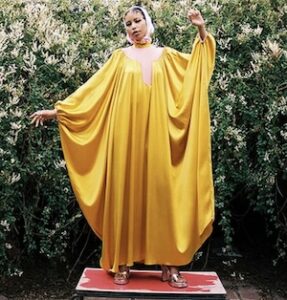Hidden Symbols
By Imogen Hart
When you think of Leonardo di Vinci, I’m sure that you don’t relate his artwork to ferrets. Actually, hidden symbols (including ferrets) have been used within art for centuries by some of the worlds most famous names.
Many others including the likes of Michelangelo and Picasso have used symbols within their art which is still universally acknowledged. As time passes by, art experts continue to find new and exciting messages within art that have never previously been acknowledged. An example of this being the ceiling of the Sistine Chapel; painted by Michelangelo which is filled with symbolism.

Ferrets
Incorporated into the artwork of artists such as Leonardo da Vinci, Lavina Fontana and many more, ferrets were used widely within renaissance art in the 16th century. During this time, portraits would sometimes include different coloured ferrets in certain positions, symbolising anything from fertility to sexual purity. Ferrets and sables were also used within the 16th century artwork in order to manifest good luck.
The colour white has always been associated with virginity and purity. During this time a womens sexual purity played an important role in making her appeal to male suitors. When painting young women, the artist would often include a white ferret in the painting which would symbolise her virginity and readiness to take a man.

A portrait of a young bride-to-be wearing a mink, ferret or sable was used within the 16th century in order to provide good luck in fertility for the future. The ferret would often be placed on her womb or she would be painted with her hand resting on her womb; this would link the animal to her fertility and sexual reproductive health, in a way manifesting that she would have a smooth pregnancy and would not face struggle in conceiving a child.
Dogs
Most famous in the painting ‘The Old Shepherd’s Chief Mourner’ by Edwin Henry Landseer, dogs are used in order to portray loyalty. Dogs would be painted alongside their male owner which would portray him as faithful, thus making him more appealing to female suitors. In this painting, the dog is seen resting his head on the coffin of his owner, symbolising him as a loyal companion.

Birdcages
Birdcages are also a great symbol to look out for in art. Often a birdcage will feature in the background of a painting of a woman, indicating that she is trapped within her marriage. Much like a bird in a cage, during this time the women would be completely dependent on somebody else, in this case; her husband, causing her to be financially reliant on her spouse. Divorce wasn’t an option in this time, which adds to the lack of independence and freedom.
‘The Birdcage’ by Henry Tonks features a woman in a luxurious gown surrounded by extravagant decor (including a birdcage), indicating her wealth and linking to her financial reliance upon her husband.

Water
Most famously seen in victorian art, water is seen as the only fully ‘female’ element and has been used to signify femininity for years. Closely linked with purity, water and a young woman can be featured in the same painting in order to symbolise sexual purity and femininity.

This is also seen in the oil painting ‘Ophelia’ by Sir John Everett Millais. Paying tribute to Shakespears ‘Hamlet’, this painting features Ophelia submerged in a stream of water, resembling a mermaid.
Similarly, ‘The Lady of Shalott’ by John William Waterhouse shows a woman wearing white floating in a boat on a lake. The woman’s white dress symbolises virginity and purity, whilst the water symbolises femininity; creating a link between the two.

Historic portraits
Hidden messages are infamous for appearing in historic art, specifically that of victorian or renaissance. Before the days of cameras, the wealthy would pay to have their portrait painted in order to showcase their wealth and power. This was a wonderful time in history which still holds huge significance to art lovers across the globe.
The way that artists would paint in this time was hugely detailed, especially when painting portraits of the deceased. Artists would frequently include an object which would indicate how the person died, what the person accomplished, or something significant that happened to the person during their lifetime. However, symbolism is not only seen portraits, but features in a wide range of more general historic paintings.

A well-known example would be the use of a rock or a small pebble in a painting. If the person is painted holding a rock or pebble it can symbolise that the person was stoned to death. Similarly, a women painted with a rip in her clothing can indicate that she has been raped.
Abstract Art
Abstract art is extremely fluid and doesn’t come with any rules or any obvious signs to look out for when trying to interpret it. However, there are symbols included in modern art that links to previous work.
The wonderful thing about abstract artwork is that is entirely open to interpretation and can hold a different meaning to each individual.
A good place to start when trying to interpret abstract art, is by paying attention to the colour pallet used. Artists have been using specific colours in order to set the tone of the piece since the beginning of time. Certain colours can hold different significance and can play a big part in sensing the emotion of the painting.

For example, the use of the colour blue, especially dull, dusty or dark blues can signify sadness or loneliness. Whereas, art which includes a range of bright colours can symbolise happiness or confusion.
If you enjoyed ‘Hidden Symbols: Interpreting Art’, why not read ‘Love Token’.





